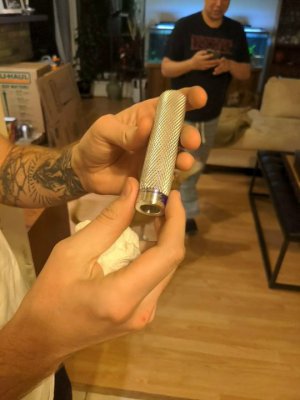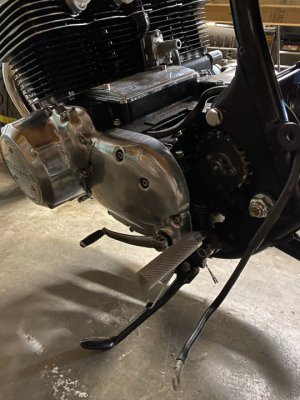- Joined
- Dec 30, 2021
- Messages
- 59
Mostly completed, still need to tap the hole. My son-in-law is restoring a motorcycle and we made the first of two foot pegs.

The Sherline was great (certainly better than the operators), but we did have to do a lot of working around the short length. For example, to drill the pilot hole for the boring operation, we had to move the part to the drill press, drill the hole, then switch to the four jaw for the boring operation. The boring operation was so close to the travel limits that we had a really hard time measuring the diameter of the hole.
Sherline will sell 17" lathe without the motor and headstock. That space would have made this operation substantially less difficult. However, If I were to spend a bit more, I could move into one of the "proper" mini lathes (little machine shop's model for example).
I inherited the lathe along with a fair number of Sherline accessories, so there would definitely be more to get apart from just lathe.
Curious if anyone has strong opinions on this.

The Sherline was great (certainly better than the operators), but we did have to do a lot of working around the short length. For example, to drill the pilot hole for the boring operation, we had to move the part to the drill press, drill the hole, then switch to the four jaw for the boring operation. The boring operation was so close to the travel limits that we had a really hard time measuring the diameter of the hole.
Sherline will sell 17" lathe without the motor and headstock. That space would have made this operation substantially less difficult. However, If I were to spend a bit more, I could move into one of the "proper" mini lathes (little machine shop's model for example).
I inherited the lathe along with a fair number of Sherline accessories, so there would definitely be more to get apart from just lathe.
Curious if anyone has strong opinions on this.


